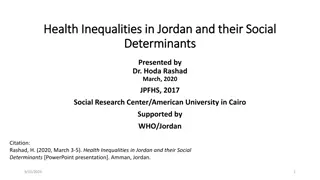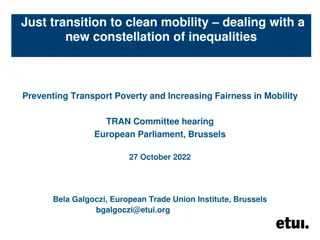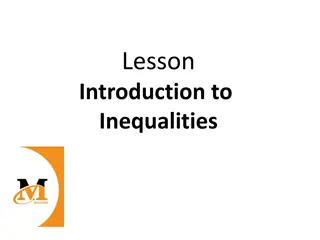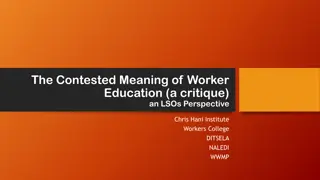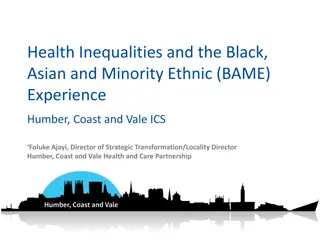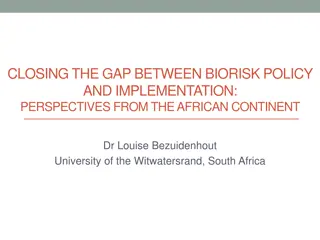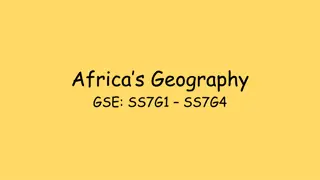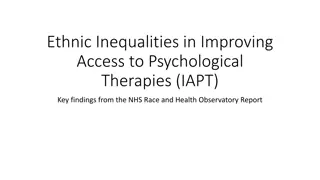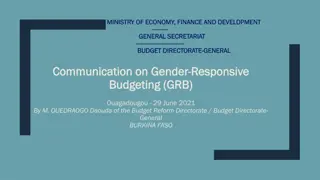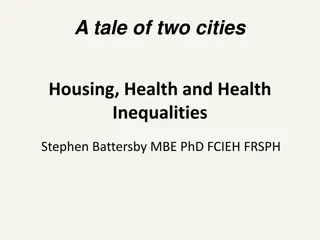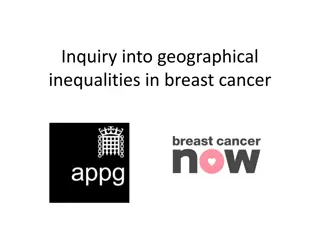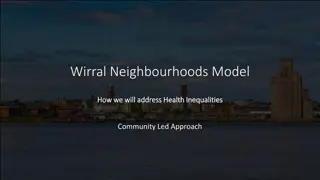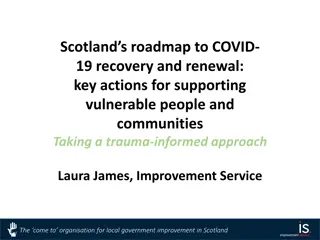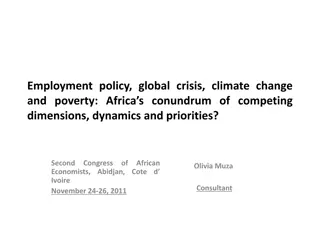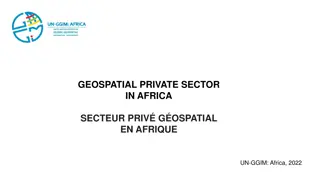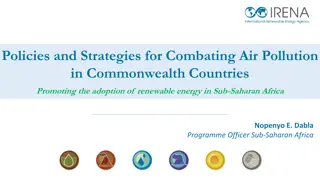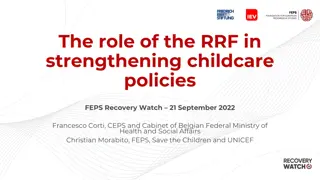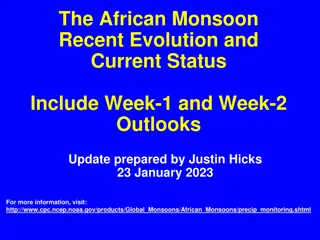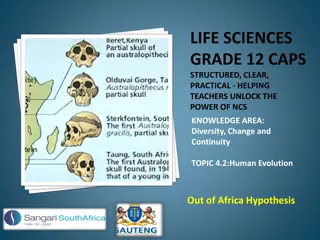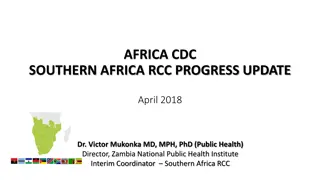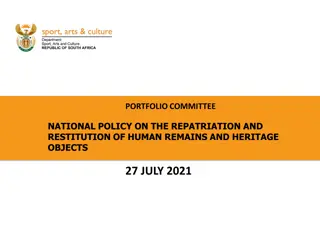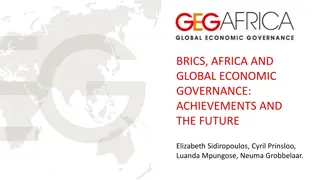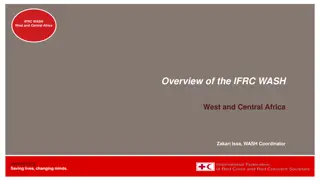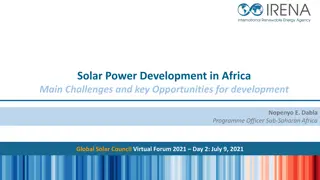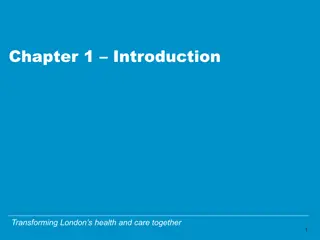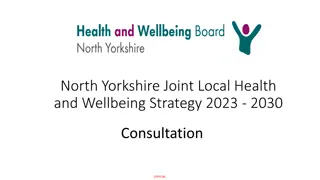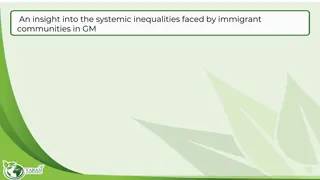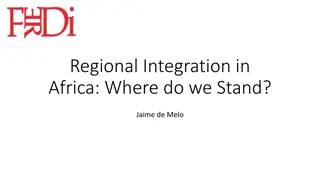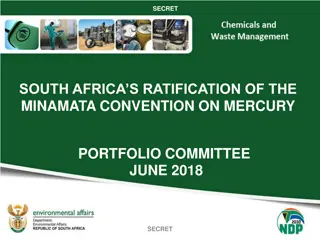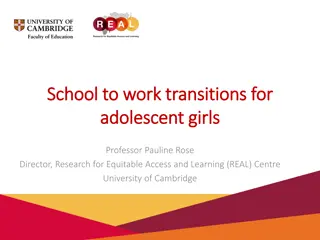Addressing Inequalities in Africa: Challenges and Opportunities
SDG-10 focuses on reducing inequalities in Africa to achieve sustainable and inclusive growth. The COVID-19 pandemic has exacerbated existing vulnerabilities, leading to increased poverty and disparities. Despite challenges, Africa has opportunities for resilience and green recovery through its young population, connectivity, and regional integration.
Download Presentation

Please find below an Image/Link to download the presentation.
The content on the website is provided AS IS for your information and personal use only. It may not be sold, licensed, or shared on other websites without obtaining consent from the author. Download presentation by click this link. If you encounter any issues during the download, it is possible that the publisher has removed the file from their server.
E N D
Presentation Transcript
Seventh session of the Africa Regional Forum on Sustainable Development Building forward better: towards a resilient and green Africa to achieve the 2030 Agenda and Agenda 2063 1 4 MARCH 2021 Brazzaville, Republic of Congo SDG 10 REDUCING INEQUALITIES
REDUCING INEQUALITIES IN AFRICA: INTRODUCTION Title SDG-10, reducing inequalities within and amongst countries conceptually aligns with the principle of leaving no one behind in the quest to achieve the SDGs and in the aspirations of Agenda 2063, The Africa We Want, for a prosperous continent based on inclusive growth. In line with Agenda 2063, this goal is particularly attuned to: Goal 1 of Aspiration 1 - beckoning for higher standards of living, improved quality of life and well being for all citizens. Goal 4 of Aspiration 1 calling for sustainable and inclusive growth, and diversification and industrialization, through economic and job transformations. While relative income inequalities have reduced in a few countries, the COVID-19 pandemic has exacerbated vulnerabilities and made social and economic a lot more stark in several places across the continent.
IMPACTS OF COVID-19 ON PRE-EXISTING INEQUALITIES IN AFRICA Growing disparities in income and wealth continued to persist during the economic downturn triggered by the COVID pandemic. Weaknesses in public service delivery & inequalities in access to services. Increased unemployment, > 20 million and more job losses, reduced incomes, & young people hit hardest (AU & ILO). > 40 million people into poverty, erasing 5 years of progress fighting poverty (World Bank). Vulnerable populations, refugees and migrants, as well as indigenous peoples, older persons, people with disabilities and children are particularly at risk of being left behind. Disproportionate effects on vulnerable groups and communities with the rise of hate speech, facing the repercussions from onset socio-economic downturn & countering measures (border control & security responses undermining the health responses)
KEY TRENDS AND PROGRESS MADE TOWARDS GOAL 10 TARGETS In 2020, the growth of Africa s GDP, which is usually above 3.2 % was insufficient to accelerate economic and societal growth enough to reduce poverty. Job creation has not met up to the demands of almost 29 million youths entering the workforce on an annual basis. Due to COVID-19, the likelihood of income and societal inequality increasing has heightened, due to: 1) The inability for low-income workers to work from home 2) The drop in economic performance 3) The lack of access to social services by low income groups, gender based factors and rural dwellers However, Africa has a comparative advantage in tackling the impacts of COVID-19, through: 1) Its booming young population 2) Increasing connectivity through transportation and communication 3) Increasing freedom of movement within regional blocs
OPPORTUNITIES FOR RESILIENCE & GREEN RECOVERY Development financing, trade and investment with a focus on connecting people to job opportunities: AfCFTA largest free trade area and a 1.2 billion-person market, increasing the returns from remittance Facilitating free movement of persons, goods and services Facilitating the safe migration and mobility of people, ensuring inclusive and sustainable engagement of migrant groups in the economy. In particular, aligning migration management and migration governance within development initiatives. Tapping into the benefits of digital innovation Capitalizing on Africa s natural resources to generate renewable natural capital Noting that, 50% of the worlds total GDP is dependent on nature, and efforts made towards sustainable use of natural resources could generate up to 395 million jobs globally (AfDB, 2021)
THANK YOU! www.uneca.org/arfsd2021



